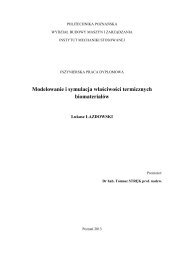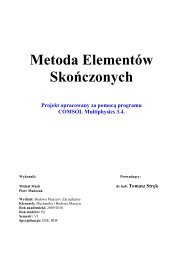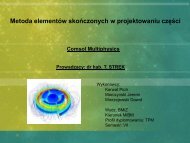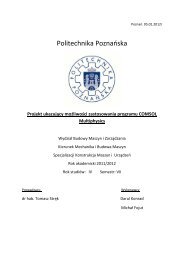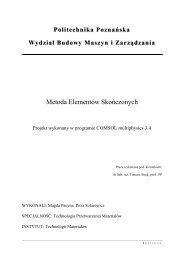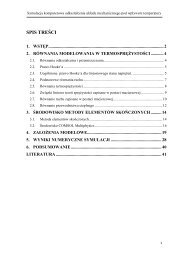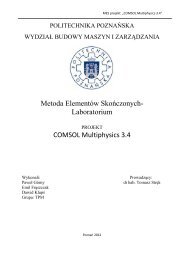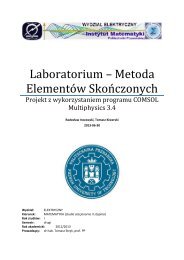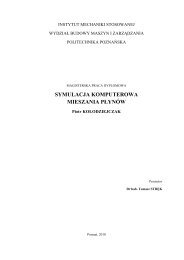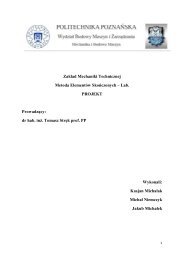Lithium-Ion Battery Simulation for Greener Ford Vehicles
Lithium-Ion Battery Simulation for Greener Ford Vehicles
Lithium-Ion Battery Simulation for Greener Ford Vehicles
Create successful ePaper yourself
Turn your PDF publications into a flip-book with our unique Google optimized e-Paper software.
AEROSPACE<br />
CSEM SA, NEUCHÂTEL, SWITZERLAND<br />
Fig. 3. Radial magnetic flux density at the rotor surface (surface plot) and<br />
magnetic flux density (arrow plot).<br />
Fig. 4. Taking Fig. 3 and adding the effects of the energized coils adds the current<br />
density in the coils (additional arrow plots).<br />
of the magnets had to be adjusted using<br />
this analytical model. But in order to<br />
synthesize these cylindrical magnets the<br />
team had to make several assumptions,<br />
which relied on intuition.<br />
Now, with COMSOL, what’s powerful<br />
is that we take the insight derived from a<br />
good initial guess of the analytical model<br />
and then run the software to finely tune<br />
the design to meet some optimization criteria.<br />
We are, however, considering some<br />
special designs where the magnets have<br />
geometries and very particular magnetization<br />
patterns, <strong>for</strong> which the development<br />
of an analytical model would be extremely<br />
difficult.<br />
Instead, with software we now can<br />
evaluate multiple designs where we vary<br />
the reaction sphere’s mass, torque and<br />
magnetic fields, and we can also investigate<br />
unusual geometries <strong>for</strong> the magnets<br />
or create the magnetic field from the coils<br />
in different ways. Thanks to COMSOL<br />
we can take an intuitive idea, build the<br />
geometry, run the simulation and within<br />
several hours can evaluate whether a given<br />
design should be further investigated.<br />
In summary, there are certain designs we<br />
are currently evaluating that we would<br />
have not been able to test using analytical<br />
approaches — but with COMSOL it<br />
takes just a few hours.<br />
We conduct our studies in two steps.<br />
First we determine if the magnetic field<br />
from the permanent magnets on the<br />
sphere provide the required flux fields<br />
(Fig. 3). In a second step we then simulate<br />
the coils being energized and verify<br />
the expected <strong>for</strong>ces (Fig. 4) and then compare<br />
them to <strong>for</strong>ces seen in a test bench<br />
(Fig. 5). The model has proven to be a<br />
powerful predictor <strong>for</strong> the <strong>for</strong>ces because<br />
the computed values are in good agreement<br />
with the measurements. In a later<br />
step we want to add thermal analysis to<br />
find out what happens to the stator when<br />
the sphere is rotating and also add the<br />
LiveLink <strong>for</strong> MATLAB ® module so we<br />
can design the controller electronics.<br />
Our simulations with current were set<br />
up with the rotor orientation matching<br />
that on the test bench (Fig. 5). The vertical<br />
<strong>for</strong>ce is computed by integrating the<br />
Lorentz <strong>for</strong>ce on each of the twenty coils<br />
and summing them to obtain the net <strong>for</strong>ce.<br />
4 8 // C O M S O L N E W S 2 0 1 1<br />
MATLAB is a registered trademark of The MathWorks, Inc.<br />
➮<br />
Cov ToC + – A<br />
➭<br />
46-49 CN CSEM 2011.indd 48 5/13/11 10:37 AM



